The month is drawing to a close and November’s arrival is imminent. I’m sorry this is coming a bit late…ok plenty late, which is because I just signed up recently on steemit.
I was just strolling in my backyard two days back and saw a smooth shiny pebble. It’s shape clearly resembled an opal’s which I had seen in a discovery science special a few days back, and then I remembered that this was October….damn!
It’s amazing how much we love gemstones. We drool when we see our favourite celebrities rock jewellery studded with precious stones. But I bet you never questioned their choices of the stones they used because you were so busy being mesmerized. Well, some of them do wear stones according to the month they’re in or their month of birth. These are known as birthstones, and opal is the birthstone of October.
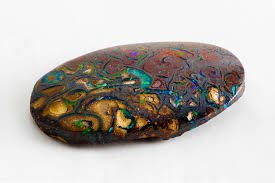
As the name implies, birthstones are gems that have been linked to particular months of the year and assigned particular characteristics such as health, longevity or prosperity. People consider wearing their birthstones as good luck.
Civilizations including the Greeks, Romans, Egyptians, Persians, Incas and Aztecs strongly believed that gemstones possessed many attributes, including curative powers and even the power to convey the soul to peace in the afterlife. While the value of gemstones is consistent across history, the story of their integration as birthstones is less clear.
Is Opal the only birthstone of October? Read on to find out!
Opals are oxides of silica and one of the five major jewels considered as precious gemstones. The other four are diamond, ruby, emerald and sapphire. I’m sure you may be wondering why gold and silver missing from the list. Well, turns out that chemistry regards gold(Au) and silver(Ag) as metals not stones.
Opals are of two broad classes – Precious and Common. The major difference is that Precious opal displays ‘play-of-color’ while Common opal does not. ‘Play-of-color’ is defined as "a pseudochromatic optical effect resulting in flashes of colored light from certain minerals, as they are turned in white light." In lay man’s language, it’s just different colours shining differently in different directions. Hmmm…that sounds interesting. Forget common opal; Let’s talk about Precious.
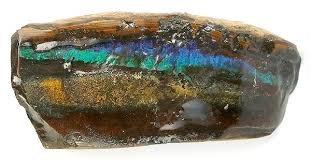
The distinctive sparkling and gorgeous colour play formed by precious opals result from the formation of very small fissures in the stone as it hardens over time as well as the deposition of additional opal in the fissures. The refraction of the original stone and the additional deposits are usually different, causing light to get diffracted and refracted in different directions. This creates bright flashes of color (think a prism…sort of).
There are several other varieties of opals such as white opals, black opals (the rarest), fire opals (these have colours ranging from yellow to red), Girasol opals (these shimmer with milky-white colour) , harlequin opals which show uniform patches of contrasting colors; and lechosa opals, which have a deep green play of color within the stone. Other types of opal include moss opal, which has inclusions of foreign material resembling moss; hydrophane, a porous, white opal that is cloudy when dry and transparent when the pores contain water; and hyalite, a glasslike, transparent variety .
Hydrophane opal
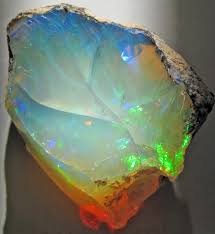
Black opal

fire opal
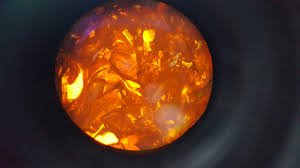
Opal is the national gemstone of Australia. Once upon a time In Europe, opal was a gemstone prized by royalty; Infact, until vast deposits were opened in the 19th century, the only known source was Cervenica in Slovakia.
The opal symbolizes faithfulness and confidence. Opal comes from the Latin word “opalus”, meaning “precious jewel.” Necklaces with opals set in them were worn to repel evil and to protect eyesight in addition to sharpening the mind and emotions. Legend says that the opal aids inner beauty, faithfulness and can help the wearer recall past lives. It is especially good for the eyes. Opals also represent hope, creativity and innocence.
Healing and Uses:
Opals strengthen memory, and also increase the will to live. They treat infections and fevers, cleanse the blood, lungs and kidneys, and regulate insulin. This stone ensures fidelity and eases childbirth.
But did you know?
Opals were once associated with bad luck. During the black plague, centuries ago, it was believed that an opal’s colours shone the most when the owner was near death and if the death befell him, the gemstone will lose its brilliance. The Opal’s reputation fell further in 1829, when Sir Walter Scott published his novel Anne of Geierstein. In this novel, the Baroness of Arnheim uses a talisman made of Opal bestowed with magical powers, and when a drop of holy water tarnishes the talisman, the opal loses its gorgeous colors and the Baroness dies just a moment thereafter.
Because of that particular scene, people began to associate opals with bad omen and death. The novel was so popular that it alone had a bad influence on opal sales, causing the sales to drop significantly, just within a year of its publishing. It’s bad luck stereotype is probably the reason why it was named after a category 4 hurricane – Hurricane Opal.
hurricane opal

The world's largest and most valuable gem opal "Olympic Australis" was found in August 1956 at the "Eight Mile" opal field in Coober Pedy. It weighs 17,000 carats (3.4 kg; 7.5 lb) and is 11 inches (280 mm) long, with a height of 4 3⁄4 in (120 mm) and a width of 4 1⁄2 in (110 mm).
Lightning Ridge is a large opal field in Australia. It is said to have been named so for a sheep that was struck by lightning…lol. The field is one of the most reliable sources of black opal in the world. Opals have been mined there as far back as the late 20th century.
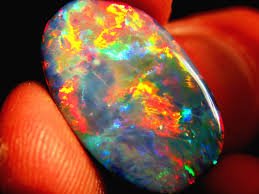
Fire opals are yellow to red in color and can be found in Queretaro, Mexico.
Opals can also be found in Ethiopia, Nevada, Australia, Czech Republic, Canada, Slovakia, Hungary, Turkey, Indonesia, Brazil, Guatemala, Nicaragua and Honduras. In 2008, NASA (National Aeronautics and Space Administration) announced that it had discovered opal deposits in Mars.
Aside Opal though, many also consider Tourmaline as an October birthstone, though the Opal is the most accepted.
Tourmaline

SOURCES:
https://www.gaia.com/article/your-birthstone-its-meaning-significance-and-healing-properties
https://en.wikipedia.org/wiki/Opal
https://www.peoplesjewellers.com/birthstone-guide
https://www.opalauctions.com/learn/did-you-know/are-opals-bad-luck
Congratulations @caruso! You have completed the following achievement on the Steem blockchain and have been rewarded with new badge(s) :
Click here to view your Board of Honor
If you no longer want to receive notifications, reply to this comment with the word
STOPDo not miss the last post from @steemitboard:
Downvoting a post can decrease pending rewards and make it less visible. Common reasons:
Submit
Congratulations @caruso! You received a personal award!
You can view your badges on your Steem Board and compare to others on the Steem Ranking
Do not miss the last post from @steemitboard:
Vote for @Steemitboard as a witness to get one more award and increased upvotes!
Downvoting a post can decrease pending rewards and make it less visible. Common reasons:
Submit